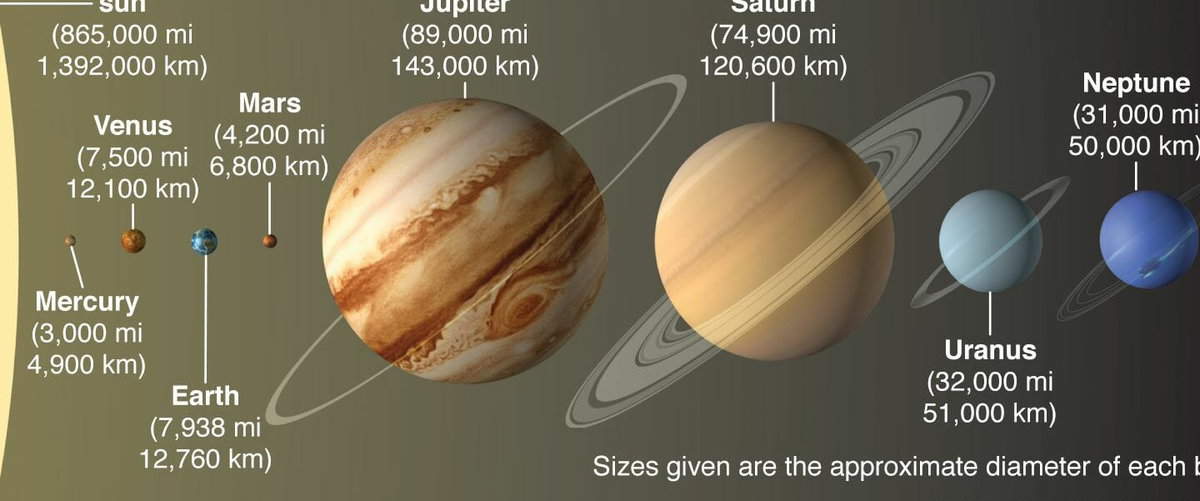The solar system is an arrangement of celestial bodies, consisting of a central star, namely the Sun, and various other objects that revolve around it. This astrophysical system has a remarkable age of approximately 4.6 billion years. Its inception can be traced back to the consolidation of a spinning cloud of gas and dust, which eventually gave rise to a central condensation – our beloved Sun. As for its location, the solar system can be found within the Orion arm of our vast Milky Way galaxy.
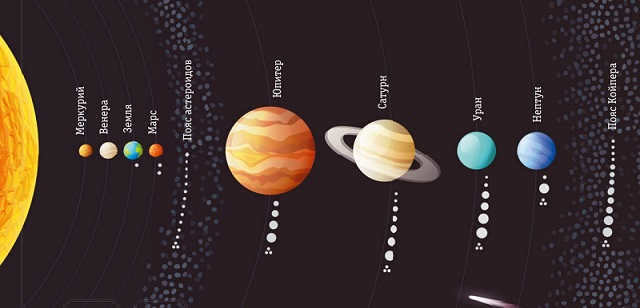
The movement of all other celestial bodies is controlled by the gravitational force of the sun. However, there are exceptions to this rule, as some moons orbit their respective planets due to the stronger gravitational pull exerted by the planet itself, which is closer than the sun.
The classification of planets is based on their characteristics and composition. There are two main groups: terrestrial planets and Jupiterian, or giant planets. Terrestrial planets, including Mercury, Venus, Earth, and Mars, are located closer to the Sun. They have a higher density and are mainly composed of silicon and iron compounds. The structure of these planets is divided into a silicate crust, mantle, and metallic core. On the other hand, the Jupiterian group consists of gas giants like Jupiter, Saturn, Uranus, and Neptune. These planets formed in the outer region of the solar system under extremely low temperatures. They are primarily composed of hydrogen and helium. As these planets have thick atmospheres, they smoothly transition into a liquid mantle.
All planets in our solar system revolve around the Sun in the same direction. Their orbits are elliptical in shape, and they are aligned with the main plane of the solar system, known as the invariable Laplace plane.
The Sun is orbited by a total of eight planets: Mercury, Venus, Earth, Mars, Jupiter, Saturn, Uranus, and Neptune. In 1930, Pluto, the ninth planet of the solar system, was discovered. However, it was later discovered that there are other celestial bodies similar in size to Pluto, with a diameter of about 2000 km, in its vicinity. This posed a dilemma of either increasing the number of planets by a dozen or excluding Pluto from the list. Ultimately, a set of criteria was established to classify a celestial body as a planet. These criteria were not met by Pluto, and as a result, it, along with several other celestial bodies, was classified as a dwarf planet.
Calculating the size of the solar system
The calculation of the size of the solar system involves various measurements and observations. The first step is to accurately determine the distances between the sun and each of the planets. This can be done using a variety of methods, including radar measurements and parallax measurements.
Once the distances are known, the next step is to measure the sizes of the planets. This can be done by using telescopes and other instruments to observe the size of the planet as it passes in front of a star or by measuring the amount of light reflected by the planet.
Another important factor in calculating the size of the solar system is the motion of the planets. By observing the movement of the planets over time, scientists can determine their orbits and calculate the size of the solar system.
In addition to these measurements and observations, scientists also take into account other factors such as the gravitational pull of the sun and other celestial bodies, as well as the effects of other forces such as tides and the rotation of the Earth.
Overall, calculating the size of the solar system is a complex process that requires careful measurements and observations. However, with advancements in technology and our understanding of the universe, scientists continue to refine their calculations and gain a better understanding of our place in the cosmos.

Edmund Halley, an English scientist born in 1656, made significant contributions to the fields of astronomy, geophysics, mathematics, meteorology, physics, and demography. One of his most notable achievements was his groundbreaking discovery about comets and their connection to the solar system. Prior to Halley’s research, comets were not believed to be related to the Sun. However, Halley’s calculations and observations proved that comets could actually return to the Sun after a specific period of time. In 1682, he predicted that a comet would reappear in 1758, and his prediction came true. This comet, now known as Halley’s Comet, continues to appear every 76 years, honoring Halley’s pioneering work in this field.
The size of our solar system can be measured in various ways. For instance, the distance from the Sun to Neptune, the farthest known planet, is approximately 4,545 million kilometers. On the other hand, the distance from the Sun to Sedna, the most distant celestial body in our system, is around 13 billion kilometers. The heliosphere, where the solar wind consisting of charged particles exists, extends about 13.5 billion kilometers from the Sun. However, it is more convenient to measure the size of the solar system in astronomical units, which is equivalent to the distance from Earth to the Sun, approximately 149.6 million kilometers. Therefore, the distance to the edge of the heliosphere is roughly 90 astronomical units.
What is the age of the solar system?
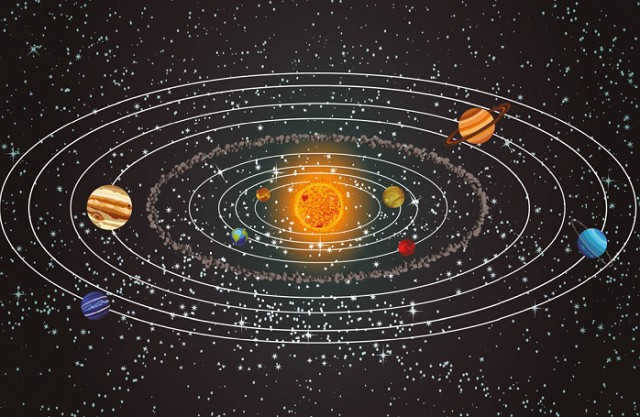
This event occurred billions of years ago, without any observers, thus scientists are left with mere conjectures. Certain scientists propose that the solar system’s planets were created through the collision of a massive star with the Sun. As a result of this collision, fragments of matter detached from both the Sun and the star, eventually forming the planets. Alternatively, another hypothesis posits that the Earth and other planets originated from small clusters of dust and gases. Over time, these clusters became denser and began to rotate. Subsequently, they were drawn towards the gravitational pull of the Sun and commenced orbiting it.
What is the process of constructing a solar system model?
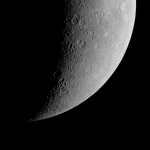
If you strictly adhere to all the measurements and create the Sun with a diameter of 7 centimeters, then Mercury, which is the nearest planet to the Sun, should be positioned at a distance of 2.8 meters from it, Earth – at 7.6 meters, Pluto – 300 meters, and the hypothetical boundary of the solar system will be pushed out almost 1000 kilometers. Regarding the proportions of the planets, based on the chosen scale, Mercury will be approximately 10 times smaller than a poppy seed, Venus and Earth – the same size, Mars – half the size, and the largest planet in our system – Jupiter – the size of a match head.
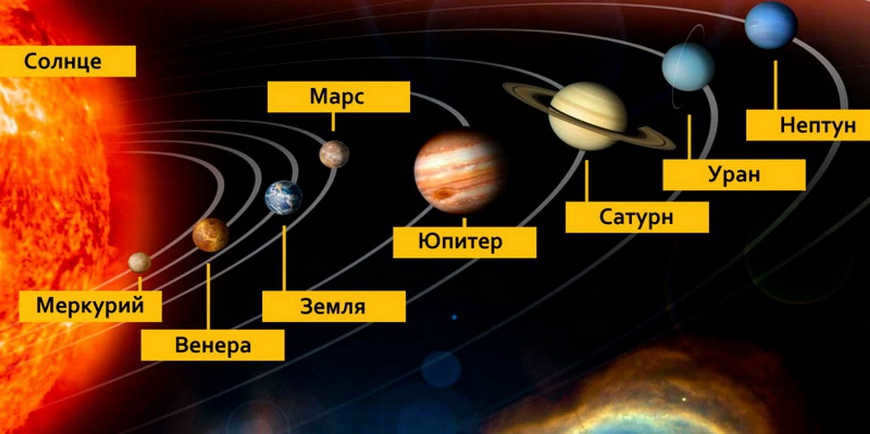
Our solar system is composed of a vast array of diverse celestial objects, with the Sun situated at its core. It serves as the binding force that keeps the entire “space family” intact: planets and comets, asteroids and meteors, and cosmic debris.
The Earth group’s planets
These planets revolve around the Sun in elliptical orbits, resembling elongated circles.
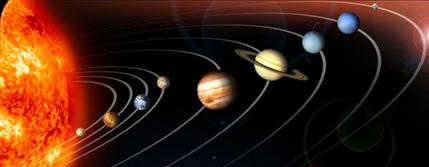
Mercury
can be paraphrased as
The planet Mercury
or
The celestial body named Mercury
.
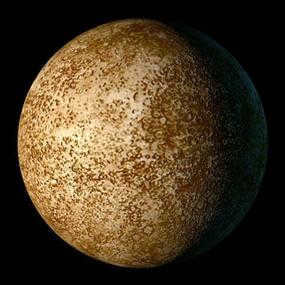
Venus
Next up is Venus. Venus stands out as one of the most exquisite planets in our solar system. When you gaze up at the night sky, it gleams more brilliantly than any of the stars. Its name comes from the goddess of beauty and love, which is fitting given its breathtaking appearance. Venus is a tad smaller than Earth, but it boasts an incredibly dense atmosphere comprising 96% carbon dioxide (CO2) and 4% nitrogen (N2). This atmosphere acts as a heat trap, causing the planet’s temperature to skyrocket to +500 degrees Celsius. The atmospheric pressure at the surface of Venus is a staggering 100 times greater than at the Earth’s poles. The surface of Venus is primarily composed of hilly plains, with a few mountainous regions, such as the magnificent Maxwell Mountains. These mountains reach a staggering height of 12 kilometers and were formed by an extinct volcano. Venus does not have any natural satellites.
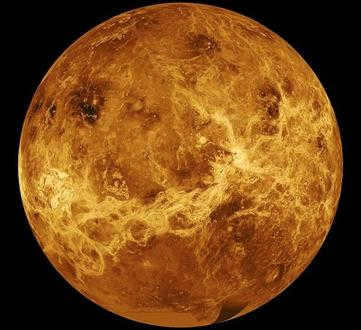
The Planet Earth
Among all the planets in the solar system, the most remarkable and exceptional one is undoubtedly Earth (Figure 10). This is the only planet where life exists in its vast diversity, ranging from the tiniest microorganisms to the unfathomable complexities of human beings. Positioned as the third planet from the Sun, Earth boasts a diameter of 12742 km and possesses an atmosphere composed of nitrogen (N2), oxygen (O2), carbon dioxide (CO2), water vapor, and noble gases. Such a unique atmosphere gives rise to the formation of clouds, the occurrence of winds, and the movement of cyclones. Moreover, the Earth’s surface is predominantly covered by water (H2O), accounting for 70% of its total area.
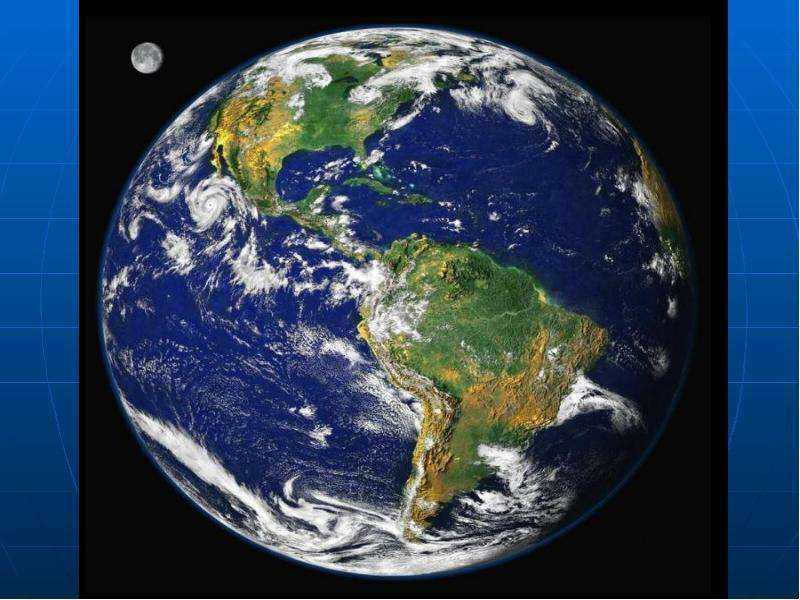
Lunar Body
The Earth is accompanied by a celestial body, referred to as the Moon, which is situated at a distance of 400,000 km. Given its proximity to our planet, the Moon has been subject to extensive research. It possesses a tenuous atmosphere and exhibits various geological features on its surface, such as continents, which appear lighter in color, and seas, which appear darker. The continents consist of mountainous regions, some of which reach elevations of up to 9 kilometers. These seas, on the other hand, are comprised of solidified volcanic lava. Additionally, the Moon is marked by enormous craters that have formed as a result of meteorite impacts.
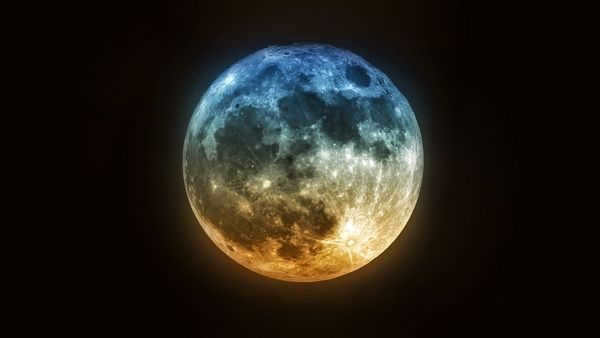
The Red Planet
Following Mercury, Venus, and Earth, we have Mars, which bears a resemblance to fire and blood in its color, hence its name being derived from the god of war (Fig. 14). The planet is roughly half the size of Earth and nearly 10 times its mass. Mars possesses a thin and sparse atmosphere primarily composed of carbon dioxide. On its surface, there are vast plains and towering mountains, including the renowned Mount Olympus, which was once an extinct volcano. At the planet’s poles, one can observe white polar caps consisting of a combination of ice and carbon dioxide. Another notable characteristic of Mars is its distinct seasonal changes: during the summer, the polar caps diminish in size, while in the winter, they expand. The temperature on Mars can drop to as low as -70 ° and only near the equator does it have the potential to rise to 0 ° . Mars has two natural satellites.
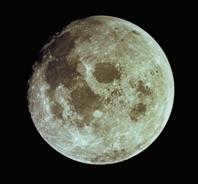
List of suggested reading materials
1. Melchakov L.F., Skatnik M.N. Textbook on Natural History for 3.5 grade of secondary school. – 8th edition. – M.: Prosveshchenie, 1992. – 240 pages: illustrations.
2. Bakhchieva O.A., Klyuchnikova N.M., Pyatunina S.K. et al. Natural History 5. – M.: Educational Literature.
3. Eskov K.Y. et al. Natural History 5 / Edited by Vakhrushev A.A. – M.: Balass.
Recommended online resources
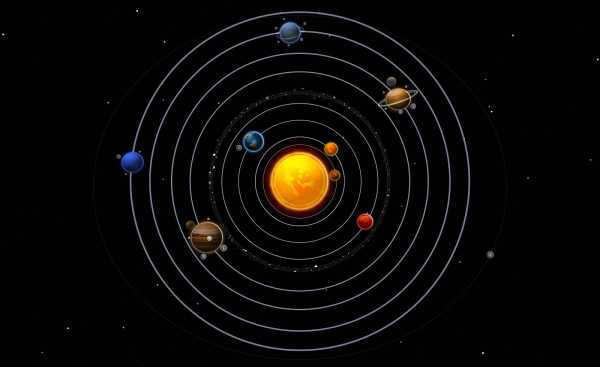
The Solar System is one of the components of the Milky Way galaxy, which is a spiral-shaped galaxy. At the center of this galaxy, there is the Sun, which is the largest and heaviest object in the Solar System and can be considered as its core. The Sun is surrounded by eight planets, each of which has its own moons. Additionally, the Solar System contains numerous asteroids, comets, and a vast amount of meteor bodies. The planets in the Solar System can be classified into two groups: the terrestrial planets and the giant planets.
The structure of the Solar System plays a crucial role not only in the formation and behavior of the planets but also in the characteristics of their moons, asteroids, comets, and the countless meteoric elements that are part of it.
The planets in the Earth’s group
The terrestrial planets consist of Mercury, Venus, Earth, and Mars. These planets are known for their relatively small size and mass. Comprised mainly of metals and rocks, they possess a significant density. In addition, the terrestrial planets are situated closer to the Sun compared to other celestial bodies.
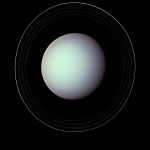
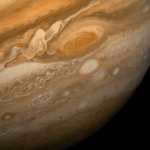
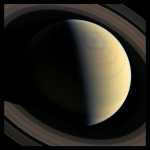
Jupiter, Saturn, Uranus, and Neptune are distinguished by their expansive dimensions and low density resulting from their primarily gaseous composition. Nonetheless, the colossal planets possess powerful gravitational forces and harbor a significant multitude of moons, with Jupiter alone boasting 63 of them. These immense celestial bodies reside at a substantial distance from the Sun.
Asteroid belts
The primary asteroid belt is situated between Mars and Jupiter, separating two groups of celestial bodies. It is considered the main belt, while the secondary belt, known as the Kuiper belt, is located beyond Pluto, which was previously considered the ninth planet. These asteroids, also known as minor planets, have been extensively studied, with approximately 10,000 asteroids in the main belt and an estimated 300,000 in total.
Dwarf planets
The term “dwarf planet” refers to celestial bodies that orbit the Sun and are similar in size to planets, but have not cleared their orbit of other debris. These objects are often found in the outer regions of our solar system, beyond the orbit of Neptune.
One example of a dwarf planet is Pluto, which was once considered the ninth planet in our solar system. However, in 2006, the International Astronomical Union redefined the definition of a planet and reclassified Pluto as a dwarf planet.
Other known dwarf planets include Eris, Haumea, Makemake, and Ceres. These objects are all smaller than the major planets in our solar system, such as Earth and Mars, but they are still considered significant in their own right.
Dwarf planets are interesting to scientists because they provide insights into the formation and evolution of our solar system. They also raise questions about the classification of celestial bodies and the criteria for defining a planet.
Overall, dwarf planets are a fascinating and important part of our solar system, offering a glimpse into the complexities and diversity of the universe.
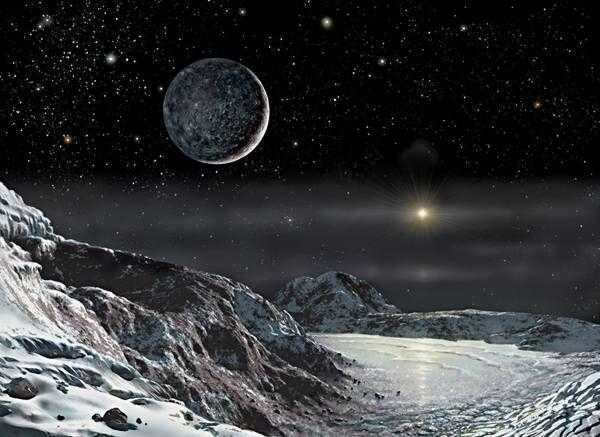
Pluto’s appearance as depicted by an artist
This celestial body, known as Pluto, was officially designated as a dwarf planet in 2006. It is considered to be the most prominent member of the primary asteroid belt, along with Ceres, and the remote Erid. Dwarf planets typically have a diameter of approximately 1000 km.
The Phenomenon of Comets
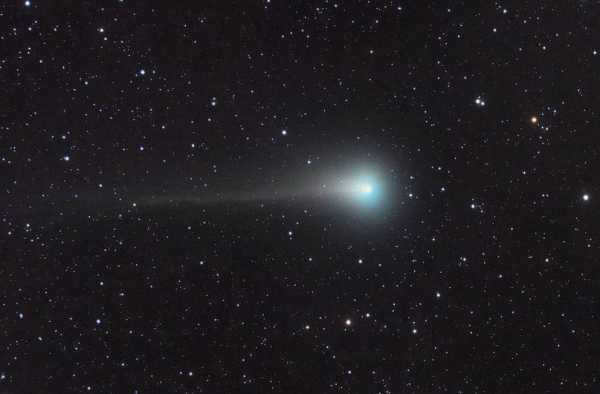
Entities within the solar system that are comprised of frozen water and particles. They reside beyond the inner asteroid belt, essentially within the realm of interstellar space, and only a select few are drawn into the Sun’s gravitational force, disintegrating to create a trail of gas and debris.
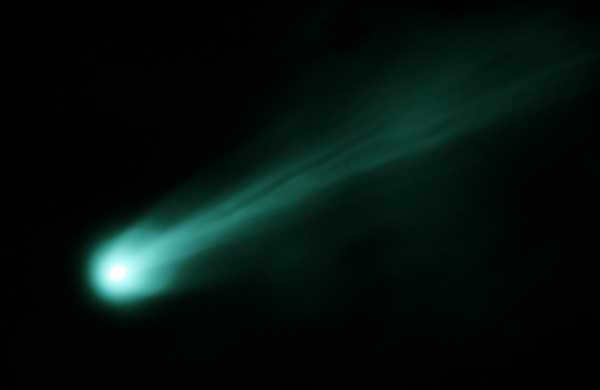
The orderliness of the solar system
The primary orderliness is the movement of the planets. They orbit in one direction relative to the Sun, specifically counter-clockwise. Venus and Uranus, which have unique orientations, as well as certain moons of the planets, have a different direction of rotation. Celestial bodies revolve along a circular-like orbit, although the orbits of Mercury and Pluto have an elongated trajectory, and comets follow such paths as well.
Traveling throughout the Solar System
What is our home in the vastness of space? It is the solar system, which consists of our brilliant star, the Sun, and all the celestial objects that orbit around it. These include the majestic planets, both big and small, along with their moons, comets, asteroids, gases, and interstellar debris.
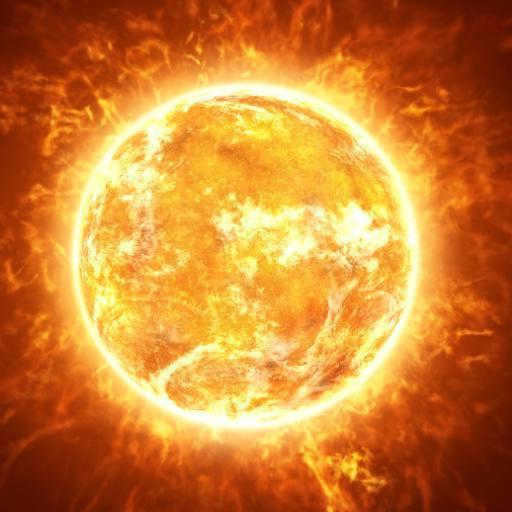
The star that our solar system is named after is the Sun. However, in a more general sense, the term “solar” is often used to refer to any system of stars.
The Origins of the Solar System
According to scientists, the formation of the solar system occurred when a massive interstellar cloud composed of dust and gases collapsed under the influence of gravity in a specific region. This collapse resulted in the creation of a protostar at the center, which eventually evolved into the Sun, as well as an immense protoplanetary disk. From this disk, all the various components of the solar system we know today ultimately formed. This process is believed to have started approximately 4.6 billion years ago and is commonly referred to as the nebular hypothesis. Originally proposed by Emmanuel Swedenborg, Immanuel Kant, and Pierre-Simon Laplace in the 18th century, this hypothesis has since become widely accepted, continually refined and updated with new scientific knowledge. It is hypothesized that as particles within the protoplanetary disk collided and interacted with increasing intensity, the temperature of the system rose. Once the temperature reached a few thousand kelvin, the protostar began to emit light. Eventually, when the temperature reached millions of kelvin, the center of the future Sun initiated a thermonuclear fusion reaction, transforming hydrogen into helium and giving birth to a star.
The Sun and its characteristics
Our scientific experts refer to the category of yellow dwarfs (G2V) in terms of spectral classification. This star is the closest one to us, with its light reaching the planet’s surface in just 8.31 seconds. When viewed from Earth, the radiation appears to have a yellow hue, although in reality it is nearly white.
The primary components of our Sun are hydrogen and helium. Additionally, through spectral analysis, it has been discovered that the Sun contains iron, neon, chromium, calcium, carbon, magnesium, sulfur, silicon, and nitrogen. Thanks to the continuous thermonuclear reaction occurring within its core, all life on Earth receives the necessary energy. Sunlight is a crucial element in the process of photosynthesis, which produces oxygen. Without sunlight, the formation of an atmosphere suitable for complex life forms would not be possible.
Mercury
Mercury is the planet that orbits closest to the sun. Along with Earth, Venus, and Mars, it is part of the terrestrial group of planets. The name Mercury was given to this planet due to its rapid speed, which was believed to be akin to that of the swift-footed ancient god. The length of a year on Mercury is equivalent to 88 days.
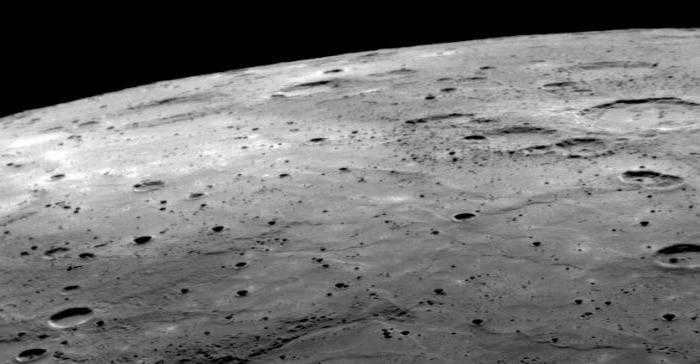
The size of the planet is relatively small, with a radius measuring only 2439.7. In fact, it is even smaller than some of the larger moons orbiting the massive planets, such as Ganymede and Titan. However, what sets Mercury apart is its significant weight, with a mass of 3.3-10 23 kg, and its density, which is only slightly lower than that of Earth. This can be attributed to the planet’s dense iron core.
Unlike other planets, Mercury does not experience changes in seasons. Its surface resembles that of the Moon, with a desert-like terrain and numerous craters. However, it is even less hospitable for life. This is because the temperatures on Mercury can range from a scorching +510 ° C on the day side to a freezing -210 ° C on the night side, making it the most extreme temperature fluctuation in the entire solar system. Additionally, the planet’s atmosphere is very thin and sparse.
Venus
Venus, named after the ancient Greek goddess of love, is one of the most similar planets to Earth in terms of its physical parameters, such as mass, density, size, and volume. Initially, they were considered twin planets, but it has become evident over time that they have significant differences. One notable difference is that Venus has no natural satellites. Additionally, its atmosphere is composed of nearly 98% carbon dioxide, and the surface pressure is a staggering 92 times higher than that of Earth. The planet is shrouded in clouds of sulfuric acid vapor that never dissipate, and temperatures can reach a scorching +434 ° C. Acid rains and thunderstorms are common occurrences on Venus, and the planet exhibits high levels of volcanic activity. It is impossible for life as we know it to exist on Venus, and even spacecraft that descend into its atmosphere have a short lifespan.
This celestial body is easily observable in the nocturnal expanse. It stands as the third most luminous entity for terrestrial spectators, emitting a brilliant white radiance that outshines even the most distant stars. Its average orbital distance from our solar luminary measures a staggering 108 million kilometers. Completing a full revolution around the Sun in approximately 224 Earth days, this celestial body also engages in its own axial rotation in a swift 243-day cycle.
Earth and Mars
The celestial bodies known as Earth and Mars are the final members of the terrestrial group, which is distinguished by having a solid surface. Each planet consists of a core, mantle, and crust, with the exception of Mercury.
Mars has a mass that is equivalent to 10% of Earth’s mass, which is approximately 5.9726-10 24 kg. Its diameter measures 6780 km, making it almost half the size of our planet. Ranking as the seventh largest planet in the solar system, Mars stands out from Earth due to its lack of vast oceans. Instead, Mars is primarily composed of solid landmasses. Beneath its surface lies a significant ice sheet, preserving water in a frozen state. The surface of Mars is characterized by a reddish hue, attributed to the high concentration of iron oxide, specifically in the form of maghemite.
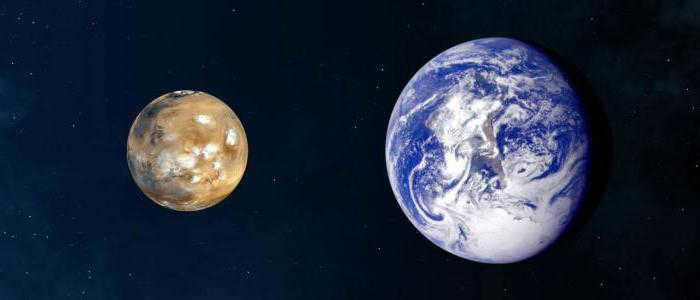
A day on Mars is slightly longer than a day on Earth, and a year on Mars lasts 668.6 days. Unlike Earth, which has one moon, Mars has two oddly shaped moons, Phobos and Deimos. Similar to the Moon’s relationship with Earth, both of Mars’ moons are constantly facing the same side of the planet. Phobos is gradually getting closer to Mars’ surface, moving in a spiral trajectory, and is likely to eventually crash into the planet or break apart. On the other hand, Deimos is slowly moving away from Mars and may eventually escape its orbit in the distant future.
In between the orbits of Mars and the next planet, Jupiter, there is an asteroid belt consisting of numerous small celestial bodies.
Jupiter and Saturn
Which planet is the largest? In our solar system, there are four gas giants: Jupiter, Saturn, Uranus, and Neptune. Out of all of them, Jupiter takes the crown for being the biggest. Similar to the Sun, Jupiter’s atmosphere is primarily composed of hydrogen. This fifth planet, which is named after the god of thunder, has an average radius of 69911 km and a mass 318 times greater than that of Earth. Jupiter’s magnetic field is also 12 times stronger than Earth’s. Its surface remains concealed beneath thick, opaque clouds, making it challenging for scientists to accurately determine what processes occur below. However, it is believed that there may be a boiling hydrogen ocean on Jupiter’s surface. Some astronomers even refer to this planet as a “failed star” due to its similar characteristics.
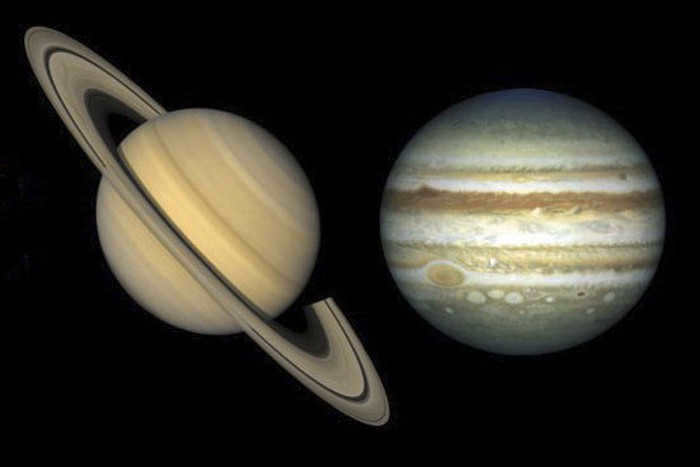
Jupiter has a total of 39 moons, with 4 of them – Io, Europa, Ganymede, and Callisto – being first discovered by Galileo.
Saturn, which is slightly smaller than Jupiter, is the second largest planet in our solar system. It is the sixth planet from the sun and is primarily composed of hydrogen with traces of helium, ammonia, methane, and water. The planet experiences powerful hurricanes with wind speeds that can reach up to 1800 km/h! While Saturn’s magnetic field is not as strong as Jupiter’s, it is still stronger than Earth’s. Both Jupiter and Saturn have a slightly flattened shape at the poles due to their rotation. Saturn is 95 times more massive than Earth, but its density is lower than that of water, making it the least dense celestial body in our solar system.
The length of a year on Saturn is 29.4 Earth years, while a day lasts for 10 hours and 42 minutes (in comparison, Jupiter has a year of 11.86 Earth years and a day lasting 9 hours and 56 minutes). Saturn possesses a magnificent system of rings, which consist of solid particles varying in size. These rings are believed to possibly be remnants of a former satellite that collapsed. In addition, Saturn boasts a grand total of 62 satellites.
Uranus and Neptune are the final two planets in our solar system.
Uranus is the seventh planet from the Sun, located approximately 2.9 billion kilometers away. It is the third largest planet in the Solar System, with an average radius of 25,362 kilometers, and the fourth most massive, surpassing Earth’s mass by 14.6 times. A year on Uranus lasts 84 Earth years, while a day lasts 17.5 hours. The planet’s atmosphere contains a significant amount of methane, in addition to hydrogen and helium. As a result, Uranus appears as a gentle blue color to observers from Earth.
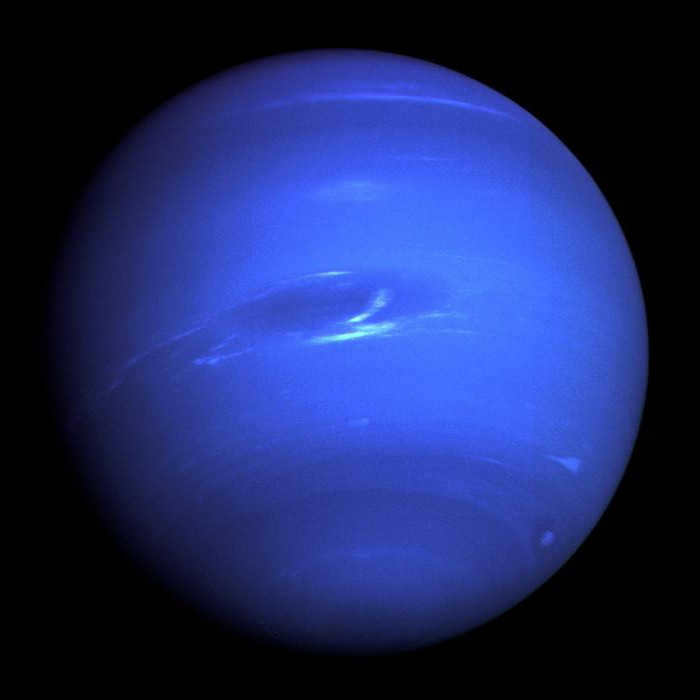
Uranus holds the distinction of being the most frigid planet in our solar system, with its atmosphere reaching a chilling -224 ° C. The reason behind Uranus’ lower temperature compared to planets further away from the Sun remains a mystery to scientists.
This celestial body boasts an impressive collection of 27 satellites. Additionally, Uranus is encircled by thin, flat rings.
Neptune, the eighth planet from the Sun, takes fourth place in terms of size (with an average radius of 24,622 km) and third place in terms of mass (equivalent to 17 Earths). While being a gas giant, it is relatively diminutive, measuring only four times the size of Earth. Its atmosphere is predominantly composed of hydrogen, helium, and methane. The upper layers of its atmosphere host gas clouds that move at an astonishing speed, the fastest in our solar system – a whopping 2000 km/h! Some scientists theorize that beneath the surface of the planet, hidden beneath layers of frozen gases and water, and concealed by the atmosphere, there may lie a solid rocky core.
These two celestial bodies share a similar composition, which is why they are occasionally classified as a distinct group known as ice giants.
Smaller celestial bodies
Minor planets are celestial bodies that orbit the Sun, but differ from other planets in their small size. In the past, they were only considered to be asteroids. However, since 2006, the definition of minor planets has expanded to include Pluto. Previously, Pluto was classified as the tenth planet in the solar system, but due to changes in terminology, it is now considered a dwarf planet. Other dwarf planets in this category include Erida, Ceres, and Makemake. These dwarf planets are located beyond Neptune’s orbit in the Kuiper belt, which is much larger and more massive than the asteroid belt. Scientists believe that both the Kuiper belt and the asteroid belt are made up of leftover material from the formation of the solar system. Some scientists have even suggested that the asteroid belt may be remnants of the ninth planet, Phaethon, which was destroyed in a catastrophic event.
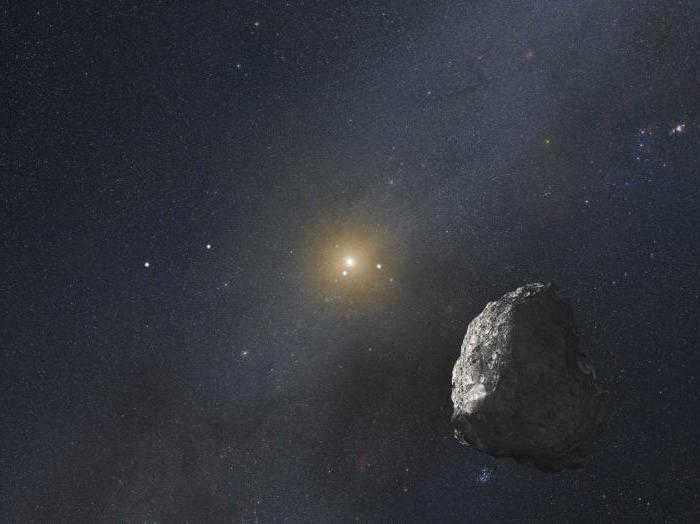
Pluto is primarily made up of ice and solid rock. Nitrogen is the main constituent of its ice layer, and its poles are capped with never-ending snowfall.
Here is the current arrangement of the planets within our solar system, as per contemporary understanding.
Planetary Procession. Varieties of Processions
For those with an interest in astronomy, the planetary procession is an incredibly fascinating phenomenon. It refers to the alignment of certain planets in the solar system, where they appear to line up along a single trajectory as they continuously move along their respective orbits.
In the field of astronomy, a visible planetary procession occurs when the five brightest planets in the Solar System – Mercury, Venus, Mars, Jupiter, and Saturn – assume a unique arrangement. During this time, the distance between them is relatively close, and they can be easily observed within a specific section of the sky.
Curious facts about our solar system
Venus, unlike other large planets in our solar system, has a unique rotation. It spins on its axis in the opposite direction to its orbit around the Sun.
Olympus, an extinct volcano on Mars, holds the title for the tallest mountain on the large planets in our solar system. Standing at 21.2 km and with a diameter of 540 km, it is an impressive sight. However, a recent discovery on Vesta, the largest asteroid in our star system, revealed a peak slightly larger than Olympus. This newfound peak may now claim the title for the tallest mountain in the entire solar system.
Jupiter’s four Galilean satellites are the largest among all the moons in our solar system.
While Saturn is famous for its magnificent rings, it is not the only celestial body with such adornments. All gas giants, along with certain asteroids and Saturn’s satellite Rhea, also boast rings.
What is the nearest star system to us? The Alpha Centauri triple star system (4, 36 light-years away) is the closest star system to our own solar system. There is speculation that this system may harbor Earth-like planets.
Children’s Guide to Planets
How can we explain the concept of the solar system to children? A helpful tool is to create a model together with the kids. You can use plasticine or pre-made rubber balls to represent the planets, as demonstrated below. It is important to maintain the proper scale between the sizes of the “planets” so that the model accurately conveys the scale of the solar system and helps children develop a correct understanding of the cosmos.
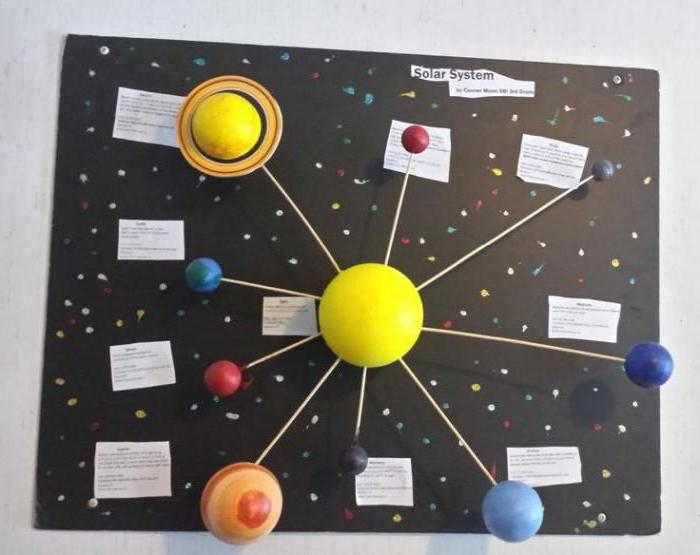
In order to create an interactive toy that helps children understand the solar system, you will require toothpicks to hold our celestial objects. Additionally, you can use a dark sheet of cardboard with painted small dots that mimic stars as a background. This will provide a more engaging and immersive experience for children to comprehend the workings of our solar system.

